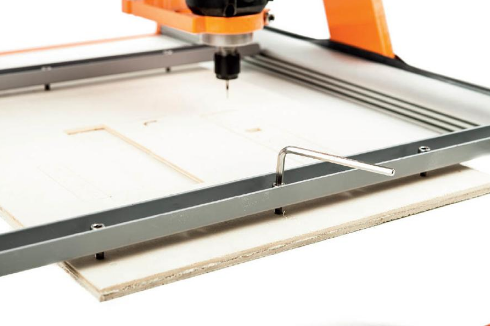how to fix workpiece on when CNC milling
Clamping the workpiece is a critical factor. The workpiece has to be rigidly fixed to
the machine table and must be resistant to the forces created by the machining
process. The type of clamp depends on the type of table, the raw material, and the
size of the workpiece. The workpiece is either fixed directly to the machine table or
clamped using a device such as a machine vise.
A machine vise can only be used if your machine is capable of fixing the work-
piece with extreme lateral pressure but without flexing. Large or flexible workpieces
are often fixed to the table using hold-down clamps. These are available in a large
variety of shapes and sizes and are relatively easy to build at home too.
Slotted aluminum plates are a great choice and square nuts, sliding nuts, vises,
and claw clamps are just a few of the fixing options you can use with most T-
shaped grooves. You will usually need a so-called spoilboard to prevent damage to
your machine table when milling holes in a workpiece. A spoilboard is made of
cheap, stable but expendable material that is fixed in place beneath the workpiece.
Typical materials are:
•Depron (extruded foam)
•Cork
•Rubber
•MDF

Spoilboards can be used multiple times, even if they are already damaged. The
important thing is that the board is sufficiently intact for clamping and supporting
the workpiece horizontally. A thick but damaged spoilboard can be milled flat and
used again.
A vacuum table is an elegant but expensive alternative clamping tool that con-
sists of a perforated table top and a vacuum pump that sucks the workpiece into
place. All you have to do to fix a workpiece is place it on the table and start the vac-
uum pump. Of course, this technique only works with workpieces that have a flat
underside and cannot be used with a spoilboard. You can use a special rubber mat
to drill through a workpiece on a vacuum table but, as soon as you drill a hole that
is wider than the vacuum channel in the table, the workpiece will no longer be
effectively held in place. Because there is no physical clamping involved, vacuum
tables are great for working on sensitive raw materials.